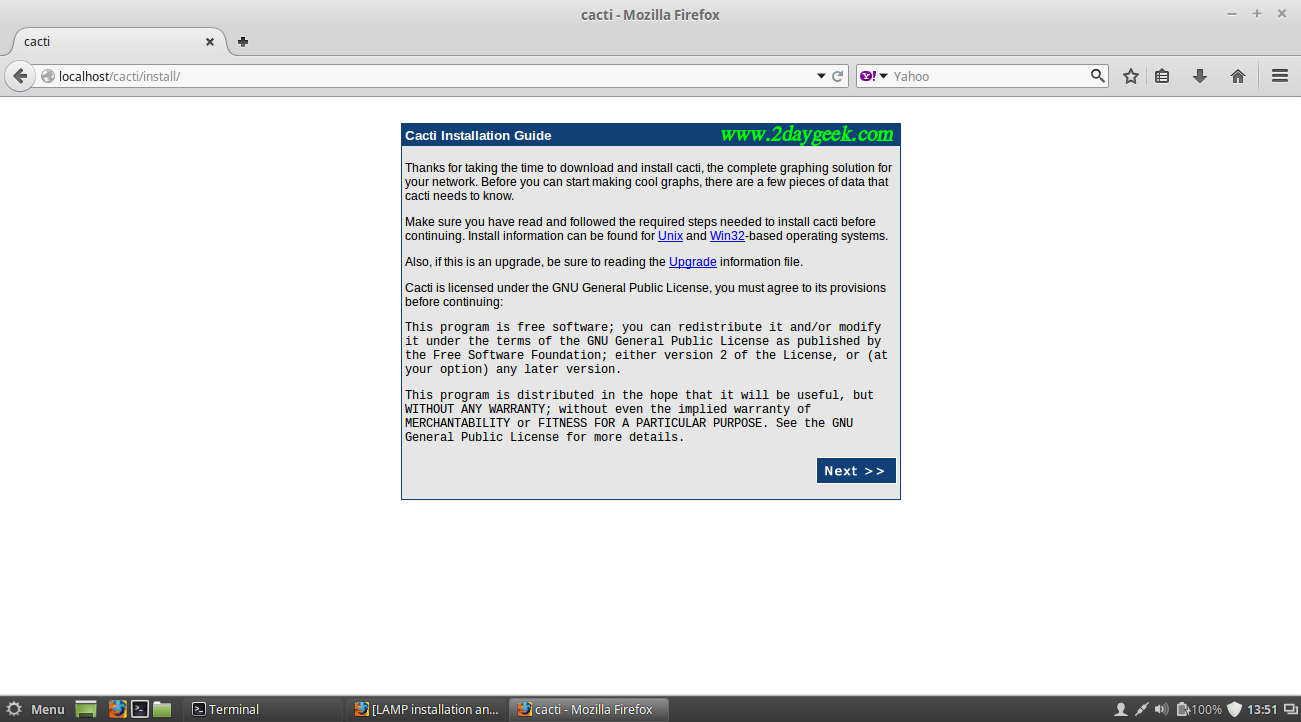


- #Cacti windows installer install#
- #Cacti windows installer update#
- #Cacti windows installer password#
$ sudo apt-get install rrdtool snmp snmpd php5-gd php5-snmp-y # Prerequisites for Debian based systems # Make a note use dnf instead of yum on Fedora 22 & later systems. Also you need few packages which are listed below. You should install LAMP stack & EPEL Repository for RPM based system, before proceeding Cacti installation. Alternatively you can install other network monitoring tools such as Zabbix, Nagios, Monitorix, Munin & Icinga2. Also read about Cacti installation on Ubuntu, Debian & Mint Systems. Cacti announced the latest release of Cacti 0.8.8g version on February 21, 2016. Using Cacti you can easily monitor the performance of your computers, networks, servers, router, switch, services (apache, mysql, dns, harddisk, mail server), SANs, applications, weather measurements, etc… Cacti using snmp to collect the data from other devices. Cacti is a complete network graphing solution designed with RRDTool’s data storage and graphing functionality.
#Cacti windows installer password#
*/5 * * * * cacti /usr/bin/php /usr/share/cacti/poller.php > /dev/null 2>&1Īt this stage, navigate to Your_CentOS_IP/cacti/ and follow the installer instruction to proceed like below:Įnter the default username admin and password admin to log in.Cacti is an open source Network monitoring tool, it’s 100% FREE for everyone in this world. Once rebooted, edit /etc/cron.d/cacti file and uncomment the following line by removing #: Now reboot your machine to take all the changes into effect:

#Cacti windows installer update#
Run the following command to update appropriate permission for logs: Now restart MySQL service to take changes into effect: You need to update or replace the following parameters in /etc/php.ini file to reflect yours:Īccess the mysql prompt and alter the cacti database like below:ĪLTER DATABASE cacti CHARACTER SET utf8mb4 COLLATE utf8mb4_unicode_ci Restart Apache service to take changes into effect: You need to search cacti.sql file and then import it into newly created database using the following command: Set global log_bin_trust_function_creators=1 Please replace following highlighted text to reflect yours:ĬREATE USER IDENTIFIED BY ' YourPassword' You need to access mysql prompt to create a user and a database for cacti. Now we need to start following services and make them persistent even when the system reboot: RRDtool is the OpenSource industry standard, high performance data logging and graphing system for cacti. You can install PHP required dependencies for cacti using the following command:ĭnf -y install php php-json php-gmp php-intl php-mysqlnd php-pear php-common php-gd php-devel php-mbstring php-cli php-snmp php-ldap net-snmp net-snmp-utils net-snmp-libs tar wget nano You can install mysql database using the following command: You can install Apache web server using the following command: It is recommended to install latest (extra packages for enterprise Linux) repository: Log into your CentOS 7/8 server and change SELINUX=enforcing to SELINUX=disabled for smooth deployment of cacti. You will need one CentOS 7/8 or RHEL 7/8 (physical or virtual machine) with minimal installed having root user privileges.


 0 kommentar(er)
0 kommentar(er)
